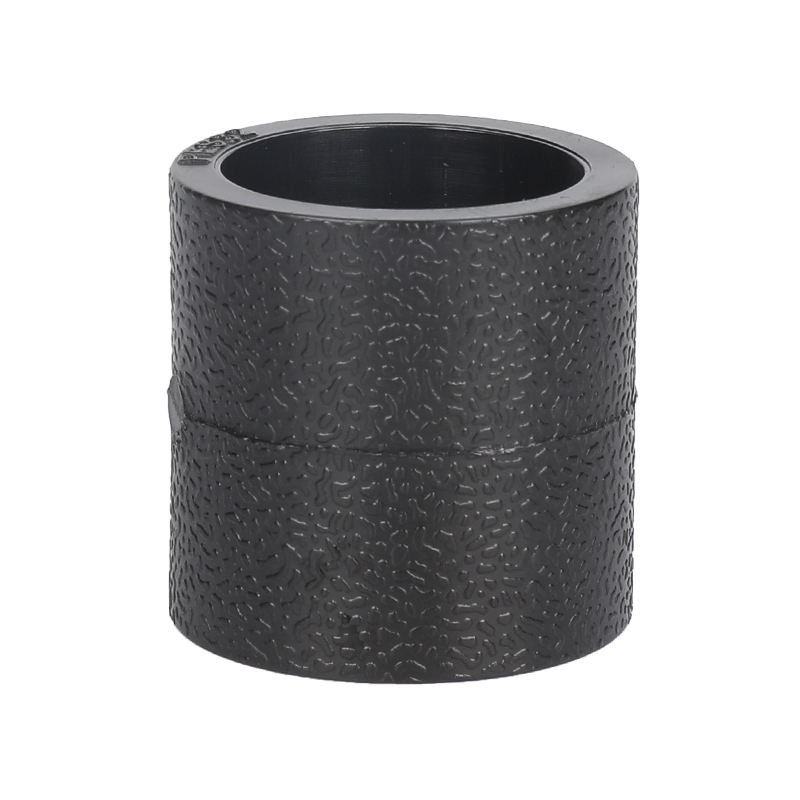HDPE 90 degree elbow butt fusion fitting produced ......
-

AddressZheJiang, China
-

Phone+86-17367068772
-

E-mail[email protected]
What is the material compatibility of Socket Fusion HDPE Fitting with all types of HDPE pipes?
Socket fusion HDPE fittings are widely used in joining high-density polyethylene (HDPE) pipes. Ensuring material compatibility is crucial for achieving strong, reliable, and leak-free connections. Here's an in-depth analysis of material compatibility considerations for socket fusion HDPE fittings and HDPE pipes:
HDPE pipes and fittings are typically made from different grades of polyethylene resin, and their compatibility is a primary concern in socket fusion. The most common HDPE resin grades used are:
This grade is suitable for various applications and is often used in municipal water systems and industrial applications.This grade offers enhanced performance, including higher resistance to environmental stress cracking, and is used in applications requiring higher pressure ratings.
For successful socket fusion, both the pipe and the fitting must be made from the same type of HDPE resin. The fusion process relies on the melting and melding of the polyethylene materials, so using different resin types can result in weak joints or failure.
HDPE pipes and fittings are designed to handle specific pressure ratings, which are influenced by the material's strength and wall thickness. Compatibility between the pipe and the fitting regarding pressure ratings is crucial.
Both the pipe and fitting should have the same or compatible pressure ratings to ensure they can withstand the operational pressures without failure. Mismatched pressure ratings can lead to leaks or ruptures under pressure.
Socket fusion requires precise dimensional compatibility between the pipe and the fitting.The nominal size of the pipe and fitting should match. For instance, a 2-inch pipe should be joined with a 2-inch fitting. The wall thickness of the pipe and fitting should be compatible to ensure a proper fusion. Variations in wall thickness can affect the fit and the effectiveness of the fusion process.
Socket fusion is typically performed at specific temperatures, usually between 400°F to 450°F (200°C to 230°C). The melting points of HDPE materials can vary slightly depending on the resin grade and manufacturing processes, so ensuring that both the pipe and fitting are compatible with the fusion temperature is important.

The compatibility also extends to the fusion equipment used.The heating tools or fusion machines should be capable of reaching and maintaining the correct temperature for the specific HDPE resin type used. Proper clamping and alignment are necessary for effective fusion. Ensure that the equipment can handle the sizes and pressure ratings of the pipe and fitting.
Adherence to industry standards and specifications is essential for ensuring material compatibility and quality.In the U.S., ASTM D3035 and ASTM D3261 are commonly referenced standards for HDPE pipe and fitting specifications.Internationally, standards such as ISO 4427 for PE pipes are used. Ensuring that both pipes and fittings meet these standards can help ensure compatibility.
HDPE materials have good resistance to environmental factors, but it is still important to consider.The pipe and fitting should be resistant to the chemicals or substances they will be transporting. While HDPE generally has good chemical resistance, specific applications may require verification of chemical compatibility.For outdoor applications, ensure that the HDPE materials are UV-stabilized to prevent degradation from sunlight exposure.
The manufacturing processes of both pipes and fittings can impact their compatibility.Pipes are typically produced through extrusion, while fittings are often produced via injection molding. While both processes use HDPE resin, slight differences in material properties due to the manufacturing process should be considered.The presence of additives or stabilizers in the HDPE resin can affect fusion. Ensure that both the pipe and fitting have compatible additives and stabilizers.
Ensuring the material compatibility of socket fusion HDPE fittings with HDPE pipes involves matching the resin types, pressure ratings, dimensions, and temperature considerations. Adhering to relevant standards and specifications, and considering environmental and manufacturing factors, are all critical for achieving successful and durable connections. Properly executed socket fusion, considering these compatibility aspects, results in a reliable, leak-free joint suitable for a variety of applications.
Product Display
-

HDPE 90 degree elbow butt fusion fitting
-

HDPE 45 degree elbow butt fusion fitting
HDPE 45 degree elbow butt fusion fitting produced ......
-

HDPE 22.5 degree elbow butt fusion fitting
HDPE 22.5 degree elbow butt fusion fitting produce......
-

HDPE equal tee butt fusion fittings
HDPE equal tee butt fusion fittings produced by in......
-

HDPE reducing tee butt fusion fitting
HDPE reducing tee butt fusion fittings produced by......
-

HDPE flange adaptor butt fusion fittings
HDPE flange adaptor butt fusion fittings produced ......
-

HDPE reducer butt fusion fitting
HDPE reducer butt fusion fitting produced by injec......
-

HDPE cross butt fusion fittings
HDPE cross butt fusion fittings produced by inject......
-

HDPE end cap butt fusion fitting
Mould injection hdpe end cap butt fusion fittings ......
-

PE/PPR socket fuison welding machine
PE/PPR socket fusion welding machine brief&fea......
-

Double U HDPE ground source pump fitting
Double U HDPE Ground source pump fitting produced ......
-

PIPE clamp HDPE ground source pump fitting
PIPE CLAMP HDPE Ground source pump fitting produce......
-
.jpg?imageView2/2/format/jp2)
Single U HDPE ground source pump fitting
single U HDPE Ground source pump fitting produced ......
-

U socket HDPE Ground source pump fitting
U socket HDPE Ground source pump fitting produced ......
 English
English Español
Español русский
русский عربى
عربى



Contact Us